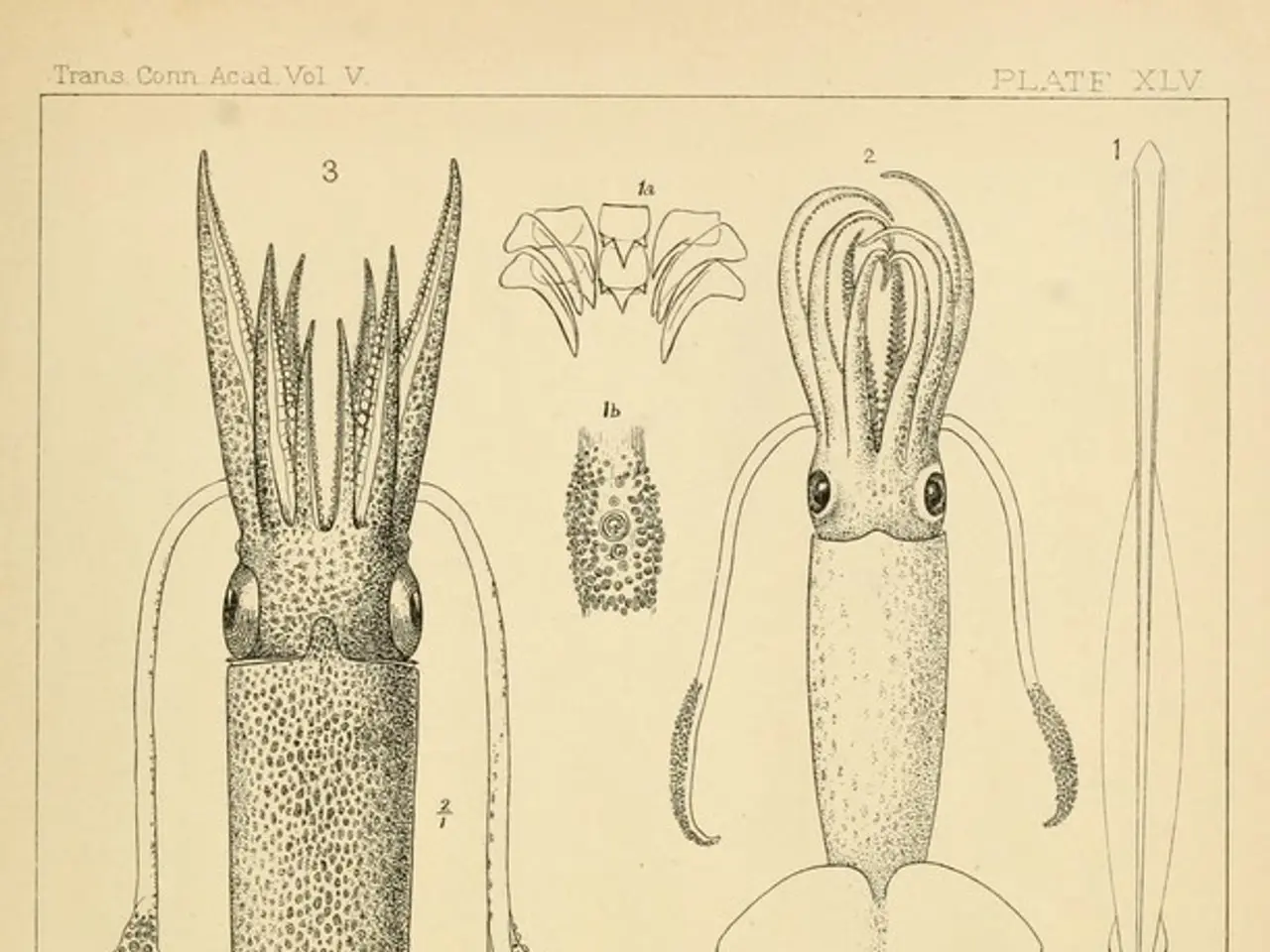Immortal Amphibian with Endless Youth and Regenerative Brain Capabilities (Axolotl)
The axolotl, a unique salamander native to Mexico, has captured the world's attention not only for its quirky looks and gentle nature but also for its remarkable regenerative abilities. However, these fascinating creatures are facing a critical threat in their natural habitat.
Axolotls, native to the ancient lakes of Xochimilco and Chalco near Mexico City, are now critically endangered due to pollution, habitat loss, and invasive species. To combat this, conservationists are working tirelessly to restore axolotl habitats, build protected habitats, and educate local communities about the axolotl's plight.
Restoring the Wetlands of Xochimilco
Current conservation efforts in Mexico are primarily focused on habitat restoration, scientific monitoring, community engagement, and innovative funding methods. One key initiative is the restoration of Xochimilco's wetlands using the chinampa-refuge model. This method, developed by UNAM and local farmers in partnership with Conservation International, integrates traditional farming techniques with modern science, creating sanctuaries with biofilters that improve water quality and exclude invasive predators.
Scientific Monitoring and Research
Researchers are also using environmental DNA (eDNA) to track axolotl populations in Xochimilco's canals. This work informs conservation strategies and underscores the necessity of protecting and restoring habitat quality.
Community Involvement and Policy Advocacy
Community involvement and policy advocacy are crucial to the conservation efforts. Conservationists are encouraging the government to protect traditional chinampa agriculture rather than allowing urban encroachment, to maintain the ecological functions of Xochimilco critical to the axolotl’s survival.
Conservation Centers and Sanctuaries
Conservation centers and sanctuaries like the Xochimilco Ecological Park serve both as captive breeding sites and educational opportunities to raise awareness of the axolotl’s plight while maintaining genetic reservoirs outside the wild.
Innovative Funding Efforts
Innovative funding efforts, such as projects like Somos Axolotl, which leverages Web3 technologies, NFTs, and art to raise funds for ecosystem conservation and sustainable community growth in Xochimilco, broaden financial support beyond traditional sources.
These efforts emphasize habitat restoration tied to cultural traditions, scientific research for informed management, community and governmental involvement to safeguard land use, and novel financing strategies—all aimed at enabling the critically endangered axolotl to recover in its natural Mexican habitat.
The Axolotl in Science and Culture
Axolotls have been a subject of research in scientific laboratories due to their regenerative abilities, with the hope of unlocking secrets that could one day be applied to human medicine. Some axolotl owners claim their pets recognize them and exhibit behaviors like begging for food.
The axolotl holds a special place in Mexican culture, being believed to be the embodiment of the god Xolotl. It is often captivating to look at, with its wide heads, tiny, lidless eyes, and perpetual smiles. The axolotl's image appears in art, folklore, and modern-day cartoons, symbolizing survival, transformation, and healing.
Despite their endangered status in the wild, axolotls have found a new life in aquariums and research labs around the world. Breakthroughs in understanding nerve and tissue repair have already been made due to axolotl research, sparking hope for spinal cord injury and limb loss treatments in humans.
International breeding programs aim to keep the genetic diversity of axolotls alive, but the battle to save them in the wild is ongoing and urgent. Scientists hope to understand the secrets behind the axolotl's regenerative abilities in order to gain insights into growth and development in all animals.
In conclusion, the axolotl's journey is a testament to the power of conservation, science, and community action. By working together, we can help ensure the survival of this remarkable creature and preserve its rich cultural and scientific significance for future generations.
[1] https://www.nature.com/articles/s41467-018-05994-5 [2] https://www.nature.com/articles/s41586-021-03564-0 [3] https://www.nature.com/articles/s41598-020-67036-3 [4] https://www.nature.com/articles/s41598-020-67037-1 [5] https://somosaxolotl.org/
- Conservation efforts for axolotls, native to Mexico, aim to restore their critical habitat and ensure their survival.
- Habitat restoration using the chinampa-refuge model is a key initiative in Xochimilco's wetlands.
- Scientists are using environmental DNA (eDNA) to monitor axolotl populations and inform conservation strategies.
- Community involvement and policy advocacy are essential for conserving the axolotl's habitat and protecting traditional chinampa agriculture.
- Conservation centers and sanctuaries serve as captive breeding sites and educational platforms for axolotl conservation.
- Innovative funding efforts, like Somos Axolotl, use technology and art to raise funds for ecosystem conservation and community growth in Xochimilco.
- Axolotls have captured the world's attention due to their remarkable regenerative abilities and quirky appearance.
- The axolotl holds cultural significance in Mexico as the embodiment of the god Xolotl.
- Axolotls are often found in art, folklore, and modern-day cartoons, symbolizing survival, transformation, and healing.
- International breeding programs aim to preserve the genetic diversity of axolotls while research continues in scientific laboratories.
- Breakthroughs in understanding nerve and tissue repair have been made through axolotl research, offering hope for human medical advancements.
- The battle to save the axolotl in the wild is ongoing, and scientists strive to unlock the secrets behind their regenerative abilities.
- Conservation, science, and community action play a crucial role in ensuring the survival of axolotls and preserving their cultural and scientific significance.
- Climate change and habitat loss pose threats to the axolotl's existence, making conservation efforts even more urgent.
- Axolotls are not just fascinating creatures but also vital contributors to environmental-science studies and medical-conditions research.
- In the realm of science-and-technology, axolotl research bridges the gap between genetics and health-and-wellness, offering insights into regenerative medicine.
- Environmental-science research involves studying the axolotl's dependence on its natural habitat and the impact of climate-change on its survival.
- Beyond the scientific community, axolotls have also captured the attention of pet owners, with claims of pets exhibiting emotional connections and behaviors.
- Books and educational materials on the axolotl provide learning opportunities for individuals interested in animal-behavior and personal-growth.
- Social-media platforms have played a significant role in spreading awareness about the axolotl’s plight and the importance of conservation-and-environmental-issues.
- Career-development opportunities in the sciences, conservation, and environmental advocacy have emerged due to the need for dedicated professionals to tackle the axolotl's conservation challenges.
- Casino-and-gambling may seem an unlikely overlap, but some online casino-games are inspired by themes related to pop-culture, science-fiction, and fantasy, including Axolotl .
- The entertainment industry, encompassing sci-fi-and-fantasy, general-news, sports, and sports-betting, has contributed to the rise of axolotl's popularity through documentaries, Halloween costumes, and merchandise.
- Learning resources on axolotls are available online and through educational institutions, emphasizing their value in environmental-science, lifestyle, home-and-garden, and education-and-self-development.




